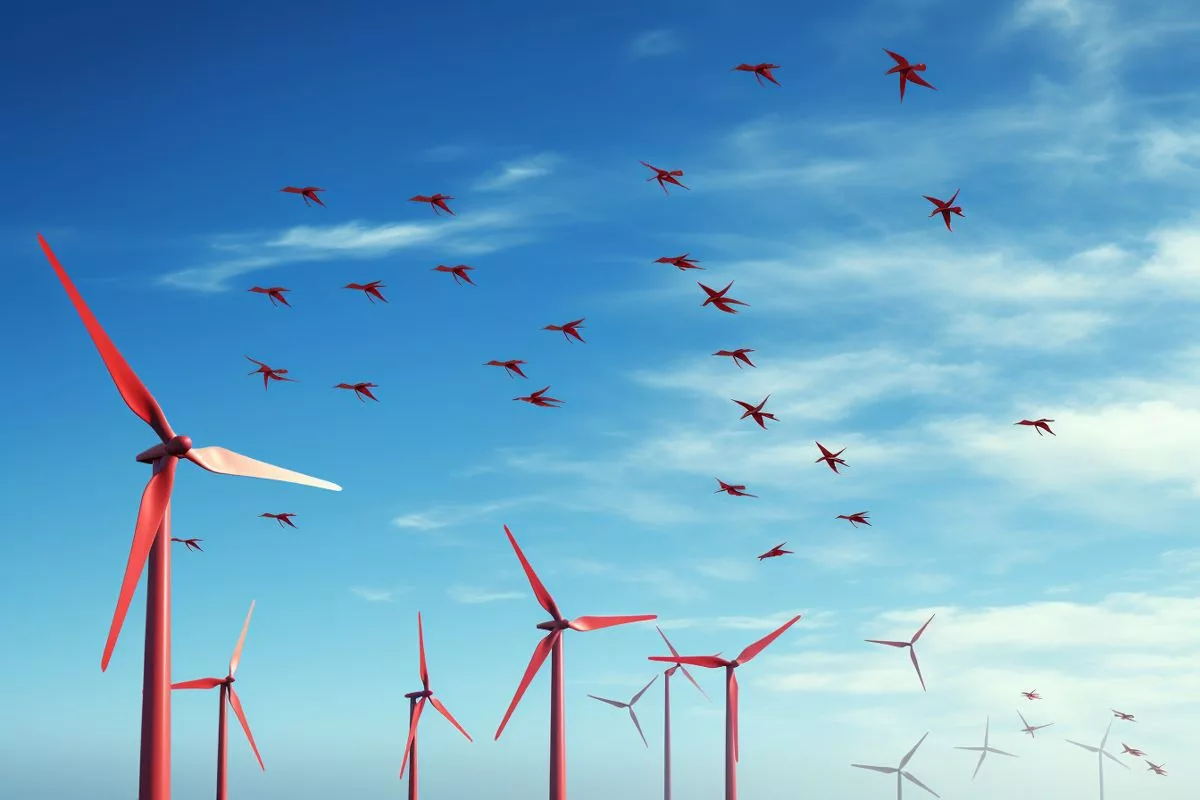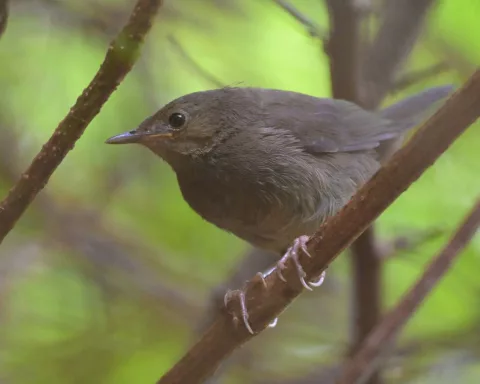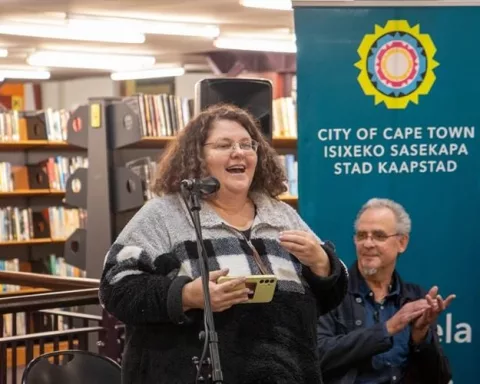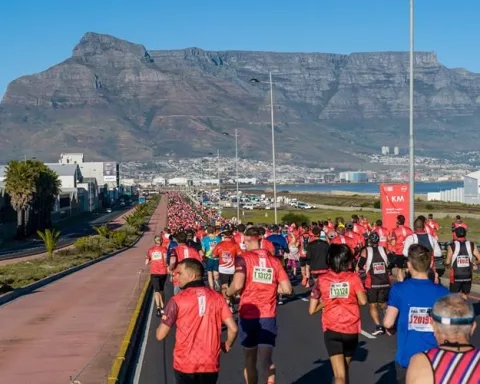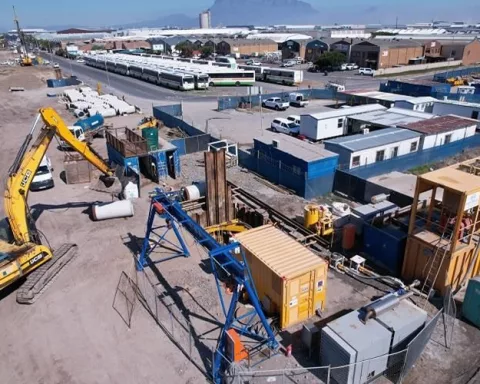The Umoya Energy Wind Farm in South Africa is using a blade-patterning strategy inspired by a project in Norway to decrease bird fatalities caused by wind turbines. They are painting ten turbines a ‘signal red’ color, while an additional ten unpainted turbines act as controls, resulting in a 70% reduction in bird fatalities at the painted turbines. With over 200 bird species suffering fatal collisions with wind turbines in South Africa, this innovative approach has the potential to address the growing concern about the environmental effects of wind energy on bird populations and promote sustainable coexistence between renewable energy and the natural world.
How is the Umoya Energy Wind Farm protecting birds from wind turbines?
The Umoya Energy Wind Farm is using a blade-patterning strategy inspired by a project in Norway to decrease bird fatalities at their facility. This involves painting ten turbines a ‘signal red’ color, while an additional ten unpainted turbines act as controls. The initiative led to a 70% reduction in bird fatalities at the painted turbines compared to the unpainted ones.
The Umoya Energy Wind Farm, located 126 km north of Cape Town, is taking measures to reduce the fatal impact of wind turbines on local bird populations. Following a successful project in Norway, the wind farm is using a blade-patterning strategy to decrease bird fatalities, especially among threatened and priority species. This innovative approach has the potential to address the growing concern about the environmental effects of wind energy on bird populations.
Blade-Patterning Project: A Promising Solution
The Umoya Energy Wind Farm is situated southeast of Hopefield along the R45 in the Saldanha Bay Municipality. Beneath its towering turbines lies a disturbing problem: the death of countless birds, many of them endangered or priority species. To tackle this issue, the wind farm has implemented a groundbreaking project inspired by the Smøla wind-power plant in Norway.
The strategy involves painting ten wind turbines a ‘signal red’ color, while an additional ten unpainted turbines act as controls. This blade-patterning method follows the Smøla project, where one of the three blades on a wind turbine was painted black. According to the Daily Maverick, this initiative led to a 70% reduction in bird fatalities at the painted turbines compared to the unpainted ones.
The Cumulative Effect of Wind Farms on Birds
In South Africa, over 200 bird species have suffered fatal collisions with wind turbines. Almost every wind farm in the country has documented fatalities of birds belonging to threatened and priority species, says Samantha Ralston-Paton, the Birds and Renewable Energy Project Manager at Birdlife South Africa. South African wind farms must monitor their impact on birds and report the data to the Department of Forestry, Fisheries and the Environment, as well as BirdLife SA.
Ralston-Paton emphasizes that the primary concern is not the effect of individual wind farms, but the cumulative impact of multiple facilities on birds. She cautions that the endangered black harrier could become extinct due to rising fatalities. A wind farm’s impact on birds can persist for its 20-year lifespan unless mitigation efforts are put in place.
With plans to build more wind farms in South Africa over the next decade, endangered bird species could face further threats, making mitigation efforts vital for their survival. Other threatened and priority species that have collided with wind turbines in the country include the Verreaux’s eagle, the martial eagle, the Cape vulture, and the secretary bird. Raptors, particularly eagles and vultures, will face the greatest challenges as wind energy development extends into new areas.
Wind Turbines and Bat Fatalities
In addition to bird fatalities, wind turbines also have negative effects on bats. The South African Bat Assessment Association (Sabaa) reports that a concerning number of bat fatalities have occurred at wind turbines, despite the creatures’ sophisticated means of detecting their environment and orienting themselves. Large turbine blades move too quickly for bats to avoid, and bats may not echolocate on known routes, resulting in unexpected collisions with newly installed turbines. Bats may also suffer barotrauma due to decompression in the low-pressure zones near moving blades.
At the recent Windaba energy conference in Cape Town, Sabaa’s Stephanie Dippenaar revealed that over 64 species of bats face threats from wind turbines, a number that could exceed bird fatalities. Wind turbines also cause other adverse effects on bats, including roost disturbances and destruction, the destruction of foraging habitats, the displacement of bats, and barriers to migration routes.
The pioneering blade-patterning project being trialed at the Umoya Energy Wind Farm offers a promising solution to the ongoing problem of bird and bat fatalities caused by wind turbines. As South Africa continues to expand its wind energy infrastructure, it is crucial to address the environmental impact on local bird and bat populations. By adopting and refining mitigation strategies such as blade-patterning, wind farms can help ensure a sustainable coexistence between renewable energy and the natural world.
How many wind turbines are being painted ‘signal red’ at the Umoya Energy Wind Farm?
Ten wind turbines are being painted ‘signal red’ at the Umoya Energy Wind Farm, while an additional ten unpainted turbines act as controls.
What is the success rate of the blade-patterning strategy at the Umoya Energy Wind Farm?
The blade-patterning strategy at the Umoya Energy Wind Farm has resulted in a 70% reduction in bird fatalities at the painted turbines compared to the unpainted ones.
How many bird species have suffered fatal collisions with wind turbines in South Africa?
Over 200 bird species have suffered fatal collisions with wind turbines in South Africa.
What is the primary concern regarding the impact of wind farms on birds?
The primary concern regarding the impact of wind farms on birds is the cumulative effect of multiple facilities on birds, as almost every wind farm in the country has documented fatalities of birds belonging to threatened and priority species.
What are some of the threatened and priority species that have collided with wind turbines in South Africa?
Some of the threatened and priority species that have collided with wind turbines in South Africa include the Verreaux’s eagle, the martial eagle, the Cape vulture, and the secretary bird.
How do wind turbines impact bats?
Wind turbines also have negative effects on bats, with a concerning number of bat fatalities occurring at wind turbines. Large turbine blades move too quickly for bats to avoid, and bats may not echolocate on known routes, resulting in unexpected collisions with newly installed turbines. Bats may also suffer barotrauma due to decompression in the low-pressure zones near moving blades.
How many bat species face threats from wind turbines according to the South African Bat Assessment Association (Sabaa)?
Over 64 species of bats face threats from wind turbines, according to the South African Bat Assessment Association (Sabaa), a number that could exceed bird fatalities.
What is the importance of mitigation strategies such as blade-patterning for wind farms?
Mitigation strategies such as blade-patterning are crucial for wind farms to ensure a sustainable coexistence between renewable energy and the natural world, as South Africa continues to expand its wind energy infrastructure.

